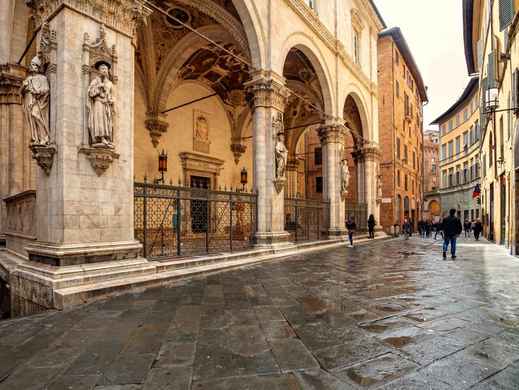


Venice
Europe
/
Italy
/
Venice
Situated in a northeastern Italian lagoon, Venice is an architectural wonderland entirely constructed on water. This exceptional city enjoys a Mediterranean climate with hot summers and cool winters. However, the fall season often brings the "acqua alta" or the high tides, adding a mysterious allure to the city.
Venetian culture is heavily influenced by its maritime past, reflected in its Byzantine and Gothic architecture inherited from years of trading. Contemporary Venetians balance their profound traditions and the demands of living in a city that hosts over 20 million tourists each year. Locals' everyday life is considerably centered around water, with water buses, known as vaporetti, accounting for public transportation, and gondolas enduring as Venetian cultural symbols.
Setting Venice apart is its total lack of roadways, replaced by 150 canals and more than 400 bridges that interconnect 118 tiny islands. The city's core, Piazza San Marco, displays the impressive St. Mark's Basilica and Doge's Palace, while the Grand Canal meanders through the city in a reverse S-shape, bordered by vibrant palazzo facades seemingly floating on water.
In terms of cuisine, Venetian fare predominantly features fresh seafood from the lagoon, with squid ink risotto and creamed cod standing out as signature dishes. The city's cicchetti culture—small servings dished up in traditional wine bars called bacari—provides an authentic experience of local life, distant from tourist hotspots.
Make sure to wander through the less crowded Cannaregio district, where the Jewish heritage and local life intertwine in peaceful squares or campos. Visitors can likewise seize the opportunity to explore the Rialto Market at dawn as delivery boats arrive with fresh produce and seafood. Displaying an intriguing contrast to Venice's medieval backdrop is the Peggy Guggenheim Collection of contemporary art.

Travel Tips for Venice
What you need to know before traveling here
Getting Around Venice
A guide to Venice's local transportation
ACTV operates Venice's primary public transit system—the vaporetto or water bus. Passengers can buy either a single-journey or multi-day pass ACTV tickets from any vaporetto stop or tobacco shop. Route 1, which plies along the Grand Canal, is most favorable for tourists. Vaporetto services operate round the clock, albeit with limited schedules at night.
Practical Tips for Venice
Things to prepare and best way to visit
Consider visiting between March and April or September and October for pleasant weather and a more manageable number of tourists. It's ideal to evade peak summers and winters, which can invite potential flooding.
Options include the Alilaguna water bus (€15, around 75 minutes), shared water taxi (€30, approximate duration of 30 minutes), or private water taxi (€120, roughly 20 minutes). Always remember to arrange airport transfers beforehand during the peak travel season.
Venice generally presents a safe environment, even during after-dark hours. Though the primary issues lie in pickpocketing in bustling tourist spots and navigating the dimly lit, narrow lanes post-sunset.
Allocate around €100-€150 per day, provided that this sum includes accommodation costs, barring posh hotels. To save some Euros, consider dining at bacari and utilizing vaporetto passes instead of private water taxis.
Please refrain from swimming in canals, dovetailing on church steps, or picnicking in public squares. Dress modestly during church visits. Standing while sipping coffee at bars comes cheaper than sitting.
See All Practical Tips for Venice

Explore Venice
Create your itinerary with our top picks below

Travel Tips for Venice

Explore Venice






























 Facebook
Facebook Instagram
Instagram TikTok
TikTok Youtube
Youtube Telegram
Telegram
